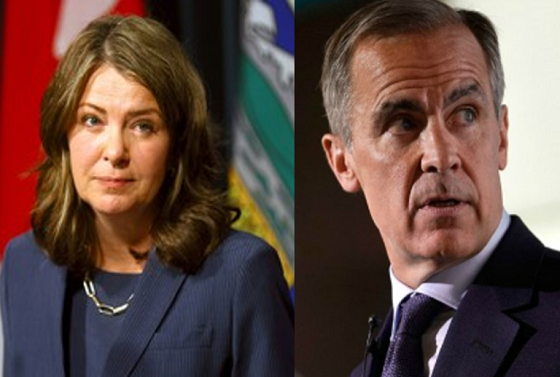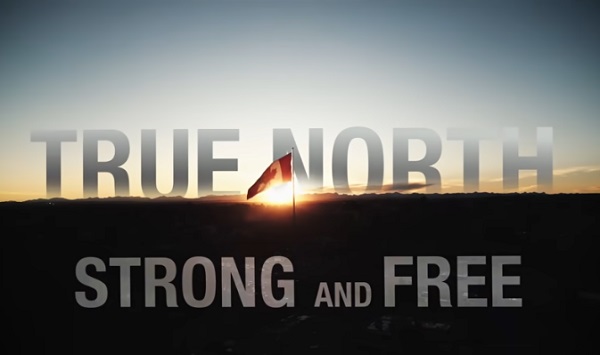National
Chrystia Freeland resigns from Mark Carney’s cabinet, asked to become Ukraine envoy

From LifeSiteNews
Chrystia Freeland is a member of the World Economic Forum board of trustees and froze bank accounts of Canadians who donated to the Freedom Convoy while she was Trudeau’s finance minister.
Liberal Transport Minister Chrystia Freeland has resigned from her cabinet position, following her 12-year record of pushing radical Liberal policies.
In a September 16 statement shared on X, Liberal Member of Parliament (MP) Chrystia Freeland announced her departure from Prime Minister Mark Carney’s cabinet, while adding that she does not plan to run in the next election.
“With tremendous gratitude and a little sadness, I have decided to step down from Cabinet today and turn the page on this chapter in my life,” she wrote. “I do not intend to run in the next federal election.”
To my neighbours, colleagues, and Canadians: thank you. 🇨🇦 Chers voisins, collègues et Canadiens : merci. pic.twitter.com/H7Myf362Qy
— Chrystia Freeland (@cafreeland) September 16, 2025
In a statement released the same day, Carney revealed that he has requested that Freeland serve as “Canada’s new Special Representative for the Reconstruction of Ukraine.”
“As a former G7 Minister of Finance, Foreign Affairs, and International Trade with deep relationships and understanding of Ukraine and its economy, Chrystia is truly uniquely positioned for this timely and essential work towards a better future for Ukrainians and peace in Europe,” he asserted.
Thank you, Chrystia, for your dedication, many contributions to Canada, friendship, and continued partnership. pic.twitter.com/4D13x0Miqh
— Mark Carney (@MarkJCarney) September 16, 2025
Freeland was appointed minister of transport and internal trade in Carney’s cabinet in May, after the federal election. Freeland was previously former Prime Minister Justin Trudeau’s deputy prime minister and finance minister.
However, she resigned from these positions in December 2024 after Trudeau requested her resignation as finance minister.
During her time in power, Freeland was well known for her ties to globalist groups and her heavy-handed response to anti-mandate protesters during COVID.
During the 2022 Freedom Convoy to protest ongoing COVID regulations, Freeland froze the bank accounts of Canadians who donated to the protest without a court order.
Later, hearings revealed that Freeland told fellow cabinet members the Freedom Convoy supporters whose bank accounts were frozen under the Emergencies Act would not be able to access their funds until they first reported to police.
Freeland was also personally commended by the founder of the World Economic Forum, Klaus Schwab, for working to achieve his globalist goals.
In addition to attending WEF meetings, Freeland is currently a member of the Board of Trustees of the WEF.
Freeland also touted the WEF’s anti-carbon narrative just days after a “renewable” energy crisis left many Canadians without power during one of 2024’s coldest weeks.
Frontier Centre for Public Policy
Bloodvein Blockade Puts Public Land Rights At Risk

From the Frontier Centre for Pubic Policy
Silence from leaders endangers the rule of law and risks turning public land owned by all Canadians into political bargaining chips.
The Bloodvein blockade of Crown land is illegal. Canadians must insist on the rule of law, or watch public land quietly slip away
The Bloodvein First Nation in northeastern Manitoba has erected a blockade on Crown land, barring non-Indigenous hunters from accessing a large area surrounding its reserve. While the move may reflect frustration with provincial policies or rising tensions over land use, there’s one inescapable fact: it is illegal.
Yet you wouldn’t know that from media coverage. CBC, for instance, referred to the affected area as “its land,” quoting First Nations leaders and provincial politicians who appear to believe that land surrounding a reserve belongs to the First Nation itself. It does not. The land in question is Crown land—public land owned and managed by governments on behalf of all Canadians, not by any individual or group.
Bloodvein is governed under Treaty 5, which, like other numbered treaties, involved the full cession of land to the Crown. The numbered treaties, signed between 1871 and 1921, were formal agreements between Indigenous nations and the federal government. In exchange for surrendering large territories, First Nations received reserved land, annual payments and the right to hunt and fish on unoccupied Crown land, among other benefits.
The language in Treaty 5 is clear: Indigenous signatories “cede, release, surrender and yield up” all rights and title to the land in question. While the treaty permits hunting and fishing on Crown land, those rights are subject to regulation and can be overridden when land is needed for settlement, resource development or other public uses.
This framework was reinforced in 1930 through the Natural Resources Transfer Agreements, which granted provinces full control over Crown lands and resource management, while protecting treaty-based hunting and fishing rights.
This means Bloodvein residents, like all Indigenous peoples in Manitoba, retain the right to hunt and fish on Crown land, but they do not have the right to prevent others from doing the same.
The Manitoba Wildlife Federation has called the blockade unlawful and urged the government to act. So far, Manitoba Premier Wab Kinew has remained silent. That silence sends the wrong message, not just about this specific dispute, but about the rule of law more broadly.
While public sympathy for reconciliation is real, so too is concern that Indigenous land claims are increasingly encroaching on public and private property rights. Cases like the Cowichan Tribes’ recent title claim, supported by oral history and largely untested assertions of continuous occupation, are raising alarm bells for property owners, especially in British Columbia, where court decisions have cast doubt on long-held ownership rights.
At the heart of these cases is “Aboriginal title”: a legal concept created by Canadian courts that recognizes ongoing Indigenous land rights based on historic occupation, even in the absence of a treaty. These claims, if successful, can override existing property titles and affect both public and private lands.
That concern is compounded by public messaging. Terms like “unceded territory,” “stolen land” and “traditional lands” are now used uncritically in media and government communications. That messaging includes the widespread use of land acknowledgements, statements recognizing that land is historically Indigenous territory. While often intended as gestures of respect, these acknowledgements are also used by some activists to reinforce legal and political claims to land.
Canadians have sat through countless land acknowledgements without being told that these rituals are often linked to broader strategies aimed at asserting expanded territorial control. Many are now asking: How far will this go?
If we are to preserve a fair and functioning system of property rights, the public must insist that governments enforce existing laws, even when it’s politically difficult. Crown land belongs to all Canadians. Indigenous groups have rights, important ones protected by treaty and by law, but so do other Canadians. Those rights must not be overridden by unilateral action or political inertia.
Premier Kinew and other provincial leaders need to reaffirm that the rule of law applies to everyone. That means making it clear: the Bloodvein blockade has no legal standing and should be removed. Canadians—Indigenous and non-Indigenous alike—have equal rights to access public land under the law.
Respect for treaty rights requires clarity and honesty about what those treaties say. They must not be reinterpreted after the fact through the lens of modern politics or public pressure.
Crown land is not a bargaining chip. It’s a trust held for all Canadians. If politicians won’t defend it, then Canadians must—because public land isn’t something we give away to silence criticism. It’s something we defend, together.
Brian Giesbrecht is a retired judge and a senior fellow at the Frontier Centre for Public Policy.
Business
The Truth Is Buried Under Sechelt’s Unproven Graves

From the Frontier Centre for Public Policy
Millions spent, no exhumations. What are we actually mourning?
From Aug. 15 to 17, 2025, the Canadian flag flew at half-mast above the British Columbia legislature. The stated reason: to honour the shíshálh Nation and mourn the alleged discovery of 81 unmarked graves of Indigenous children near the former St. Augustine’s Residential School in Sechelt.
But unlike genuine mourning, this display of grief lacked a body, a name or a single verifiable piece of evidence. As MLA Tara Armstrong rightly observed in her open letter to the Speaker, this symbolic act was “shameful”—a gesture unmoored from fact, driven by rumour, emotion and political inertia.
The flag was lowered in response to claims from University of Saskatchewan archaeologist Dr. Terry Clark. According to announcements from both 2023 and 2025, Dr. Clark “discovered” 81 unmarked graves using ground-penetrating radar—a tool that detects changes in soil, not bones. Its signals require interpretation—and in this case, the necessary context never arrived.
Even more concerning, there has been no release of names or records. Chief Lenora Joe of the shíshálh Nation said the names of the children are “well known” to Elders. Yet none have been made public: not a single missing child reported, no date of disappearance, no death certificate, not even a family willing to speak openly.
Instead, we’re being asked to accept deeply held recollections as conclusive proof—without corroborating evidence.
The original 40 anomalies—first announced in April 2023—appear to be located beneath the paved parking lot of the band’s administrative and cultural hub, the House of Hewhiwus complex. This land has been excavated before. At no point were any human remains discovered. As former Chief Warren Paull confirmed, “remains were never found” and the stories circulating then “don’t include burial at all.” The pattern of red dots in the band’s video—a tidy grid beneath the asphalt—looked less like sacred ground and more like a plumbing schematic.
The grief narrative, meanwhile, was presented with great care. Professionally produced videos showed solemn Elders, blurred radar images and mournful speeches—all designed to evoke emotion while discouraging inquiry. In one video, Chief Joe warned that asking questions would “cause trauma.”
But reconciliation doesn’t mean blind acceptance. Silencing questions isn’t healing—it risks turning reconciliation into a one-way narrative.
In a 2025 follow-up, Dr. Clark reported another 41 anomalies—this time likely in the community’s own cemetery on Sinku Drive. Brief footage confirms that GPR was conducted among existing gravesites, where decayed wooden markers would naturally result in “unmarked” burials. As Tara Armstrong noted, finding undocumented graves in or near a cemetery is about as surprising as spotting seagulls at a landfill.
Even so, political leaders continued to validate the narrative.
The B.C. government endorsed the claims with another round of symbolic mourning. In doing so, it lent the power of the state to what increasingly resembles collective fiction. Since 2021, similar claims across Canada have triggered government apologies, funding announcements and media headlines—often without physical evidence.
Residential schools were bureaucratic institutions. They kept meticulous enrolment and death logs. The Truth and Reconciliation Commission, with eight years of access to these archives, conducted more than 6,500 interviews and reviewed thousands of documents. It found no cases of children who disappeared without a trace. Despite this, $2.6 million in federal funds was spent in 2025 alone on the Sechelt investigation.
This isn’t reconciliation: it’s mythmaking dressed up as healing. Worse still, it undermines real tragedies by replacing verifiable history with folklore dressed up in government robes.
Governments should not promote unverified stories with ceremonial gestures. Flags lowered at half-mast should honour actual deaths, not narrative convenience. Public policy, especially around historical reckoning, must be rooted in fact, not feelings.
If reconciliation is to mean anything, it must be anchored in shared truth. And the truth is, we cannot mourn 81 phantom children because they almost certainly never existed.
Canadians must start insisting on evidence. The standard of proof should be no different here than in any serious allegation. The principle that underpins our justice system—innocent until proven guilty—must also guide our view of history.
State-sponsored guilt rituals disconnected from verifiable fact are not justice.
They are theatre.
And not even good theatre.
Marco Navarro-Genie is vice-president of research at the Frontier Centre for Public Policy and co-author, with Barry Cooper, of Canada’s COVID: The Story of a Pandemic Moral Panic (2023). With files from Nina Green.
-
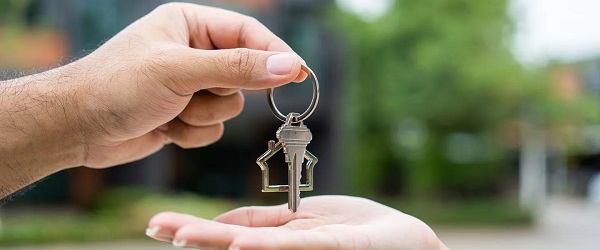
 Business2 days ago
Business2 days agoCarney government’s housing GST rebate doesn’t go far enough
-

 Alberta2 days ago
Alberta2 days agoBreak the Fences, Keep the Frontier
-

 Alberta2 days ago
Alberta2 days agoAlberta Education negotiations update: Minister Horner
-

 Business2 days ago
Business2 days agoCarney’s ‘major projects’ list no cause for celebration
-
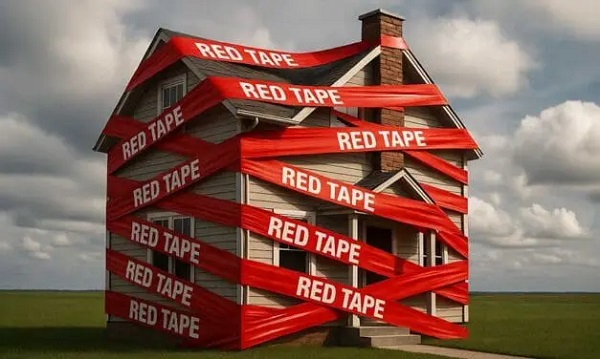
 Business1 day ago
Business1 day agoRed tape is killing Canadian housing affordability
-

 Opinion2 days ago
Opinion2 days agoRFK Jr. Reveals Unforgettable Details About Charlie Kirk in Emotional Tribute
-

 Business2 days ago
Business2 days agoGlobal elites insisting on digital currency to phase out cash
-
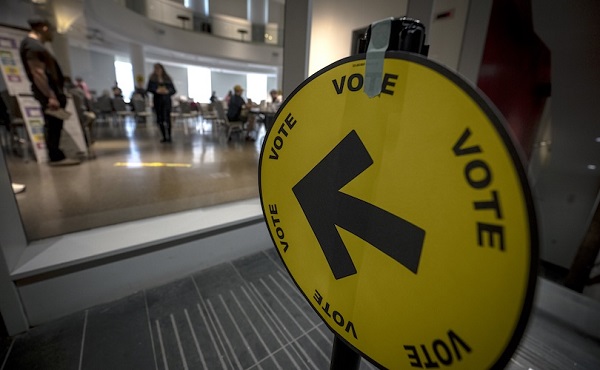
 2025 Federal Election1 day ago
2025 Federal Election1 day agoPost election report indicates Canadian elections are becoming harder to secure


